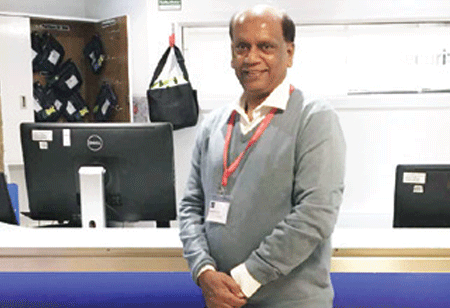
The current pandemic has posed several challenges to every industry and has forced us to evaluate our present way of functioning. The following is a brief on the current trends, scenario and how technology will transform the way we do business in the new normal era.
I have captured those aspects which are predominantly pertinent to the capital goods industry.
Policy Matters:
The Government has accorded permission to private players for commercial coal mining which is likely to pave the way for modernisation of this sector and hopefully bring rapid strides in productivity gains. India with its abundant coal reserves cannot afford to ignore this reliable source of energy even in today`s context of environment concerns which is covered later in this article. This opening up of the coal mining will cascade down to the Power sector whose dependence on imported coal will diminish if not totally vanish. Thermal power would still continue to meet India’s base load power needs for the foreseeable future. In India, the debate of coal versus renewable among policy makers is most likely to change and stabilize towards a clear direction of a blend of coal and renewable.
Long-Term Energy Policy:
New research and innovation that would drive the trends in the long term perspective can be categorized into two kinds – Those that help us build low-carbon world that aims to reach an ideal state of manufacturing which are carbon-free.
Those that help us build a carbon-neutral world that aims to maintain carbon equilibrium in the living ecosystem through carbon capture, carbon storage and carbon recycle technologies.
The policy makers should loose no further time in setting a clear course in determining the future direction as listed above.
Supply Chain Challenges
A calibrated call rather than "sudden stops" is required to lower India's huge import dependence on China, the country's largest lender State Bank of India (SBI) had said in a research report. In terms of numbers, India's dependence on China is the heaviest in low-value imports that comes at a time when India is looking to address the trade imbalance with its biggest trading partner amidst a prolonged and bloody border standoff.
China accounts for 18 percent of India’s imports and only 9 percent exports. The bilateral trade amounted to $103.5 billion in the April 2019-February 2020 period.
The uncertainty in global tariff war coupled with protectionist measures is compounding the existing over dependence on Chinese imports for an infrastructure starved India. Solar panels will no longer be cheap initially if locally manufactured, but just like the success of our thermal power plant manufacturing capability, will over a period of time become competitive.
The corridors of power should have the political will to ensure all consumers pay a fair tariff for energy.
Amidst weak domestic demand, Indian Steel Mills are thriving for new pastures by becoming more competitive. Indian finished Steel exports is expected to surge by 50% this fiscal with Indian Steel Mills becoming more cost competitive.
The present pandemic has posed unique challenges to supply chain amidst disruptions on account of lockdowns and curfews. Businesses are adapting to work with reduced work force due to migration of labour coupled with various safety and health related restrictions.
Human Resources -Technology Interface
The next few years will see a steady adoption of digitalization and artificial intelligence that will transform the workplace, similar to the adoption of lifestyle changes we have seen with the advent of smart phones as people increasingly interact with smarter machines. While some of us may not accept these as possibility in our work lives, it is unknowingly embracing our personal lives already. Collision between AI-driven and traditional firms are happening across industries and it’s hard to think of a business that isn’t facing the pressing need to digitalise its operating model and respond to the emergence of technology.
Whilst, Industry 4.0 is expected to bring in speed and reliability, challenges in human resources is a concern which needs to be addressed swiftly.
Organizations have to focus on the realities of shifting skill needs by a multipronged approach:
Mindset Shift: Instilling a culture of life-long learning and providing training opportunities for employees and addressing fears
Collaborative Replaces Hierarchy: Agile corporate structures featuring less hierarchy and more collaborative team networks
New Collar Jobs: Activities will be reallocated between workers with different skill levels, creating a new set of middle-skill positions who will work along with the traditional brick and mortar
Aligned Leadership: Senior leadership and key functions will also need to align their strategies to orchestrate the changes
We’re moving from an era of industry specific core competencies to an era shaped by data and analytics and powered by algorithms hosted in the cloud for anyone to use. Block chain technology offers new tools for authentication and authorisation that precludes the need for many centralised administrators. This will revolutionise the way Logistics, Healthcare, Retail, Legal, Energy and Government transactions are carried out bringing in trust and transparency.
To summarise, the pandemic is an opportunity to accelerate the thought process towards a meaningful change .Industry has to work with a singular goal of improving efficiency and not carry the burden of decades of bureaucracy and lack of decisiveness if we have to be competitive and internationally accepted.
The year as many a pessimist would write off, should be viewed as a launching pad for course correction leading to India becoming self-reliant and competitive.
We use cookies to ensure you get the best experience on our website. Read more...